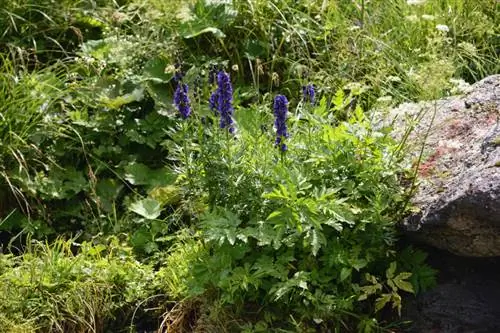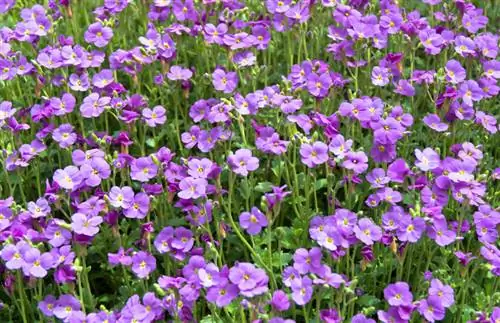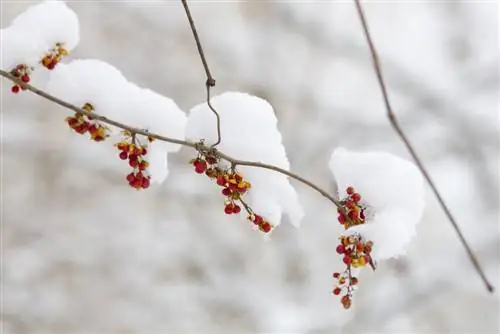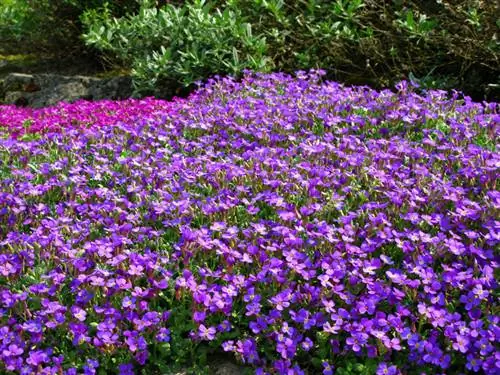- Author admin [email protected].
- Public 2023-12-16 16:46.
- Last modified 2025-01-23 11:20.
Spring often brings not only anticipation for the gardening season but also gloom - namely when you see how some plants have frozen due to severe frost. Can this also happen with the blue cushion or is this plant immune to frost damage?

Is the blue cushion hardy and how do you protect it from frost?
The blue cushion is hardy and can withstand temperatures down to -20 °C, but winter protection is recommended for extreme cold snaps and for young plants. Brushwood, fir branches, compost, fleece or leaves are suitable for protecting against frost damage.
Frostproof in our latitudes
Although the blue cushion comes from the Mediterranean region and the Near East, it tolerates frost extremely well. This is probably due to the fact that it is native to mountainous areas (preference for lime), where it can get frosty cold.
The blue cushion, which is considered to love warmth, can cope with temperatures down to -20 °C if it is in a protected location. Thanks to its good frost hardiness, it can be cultivated in this country for several years.
Equip with winter protection in extreme times
You should only protect your blue cushion if there are severe drops in temperature in winter. If you hear from the weather forecast that temperatures will drop below -15°C, you should cover the plant as a precautionary measure. Brushwood is well suited for this.
But be careful: Remove the protective layer immediately if the temperatures rise. If a protective layer is on the blue cushion for too long, fungi have an easy time and attack the evergreen plant. Getting rid of them can be a hairy affair
It is better to protect young, newly propagated plants
Not only extreme times are a reason to protect blue cushions in winter. Furthermore, all young plants should be protected when it gets frosty. If you have only sown the blue cushion in summer or propagated it through cuttings, winter protection is advisable.
The shoots of the young plants are not yet well matured and are therefore more susceptible to frost damage. Protect them in winter with, for example:
- brushwood
- Fir and spruce branches
- a layer of compost
- fleece
- or leaves
Cut before the onset of winter
Don't forget that it's best to cut the blue cushion before the onset of winter. However, this is only recommended if you missed pruning in the summer. Pruning removes old shoots that could increase the risk of mold and rot in winter.
Tip
Since blue cushions are evergreen, they should be supplied with water even in winter. Yellow leaf discoloration indicates excessive dryness.






